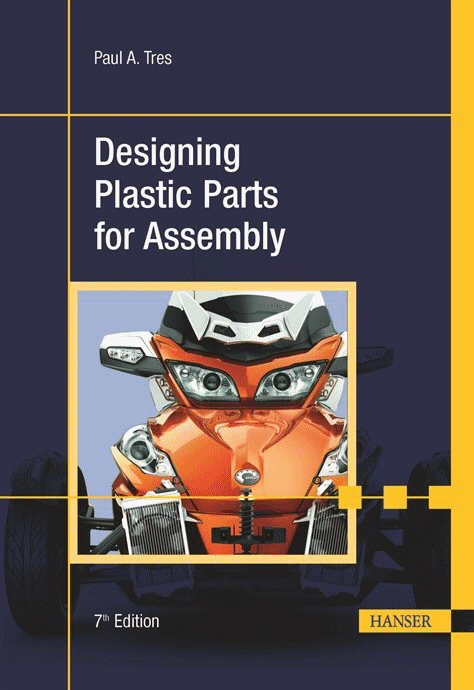Designing Plastics Parts for Assembly
|
Preface to 7th Edition David M. Paris, Esq. Nurenberg, Paris, Heller & McCarthy Co., L.P.A. 2014, Cleveland, OH
|
I am pleased and honored that Paul Tres has invited me to write the preface for the seventh edition of Designing Plastic Parts for Assembly. Paul is an outstanding expert in the plastics field, and Designing Plastic Parts for Assembly enjoys a well-deserved reputation as an indispensable resource. His book is an excellent and accessible reference work on all issues pertaining to the design and manufacture of plastic parts. One of the strengths of Paul's book is his integration of lucid descriptions of fundamental material and manufacturing principles with case histories and real-world examples, and this new edition continues and expands upon this approach. Paul explains the reasons behind each principle and, in many instances, illustrates it with an example that helps make the information accessible to experts and laypeople alike. The need to avoid sharp corners in design, for instance, is illustrated by the tragic case of the DeHavilland Comet, which suffered catastrophic failures when the corners of its passenger windows (which were square) failed under the constant stress of pressurization and depressurization. The need to conduct stress/strain curves specific to the polymer resin mix being used for a particular application, in turn, is illustrated by the failure of a snap-fit latch designed to hold a defibrillator battery in place. Because the snap-fit latch did not hold the battery in place, the defibrillator failed to perform when it was needed to save a life. In the testing that occurred in the ensuing litigation, it was determined that the vendor’s stress/strain curves had been done using only unpigmented product, and were not accurate for the product to which coloring agents had been added. Tres also does a good job describing the joining techniques available to present-day plastic part designers. His inclusion of the surface preparation requirements associated with the various welding techniques is of particular importance to novice designers, as it details the sometimes hidden costs associated with each selection. From here, Tres guides the reader through the proper design of press fits, living hinges and snap fits. Again, each design section is reinforced with modern examples and common pitfalls. Illustrations such as these highlight the fact that selecting the proper materials and design approach are critical not just to the bottom line, but to ensuring consumer safety. Although the world of plastic manufacturing is constantly evolving, core principles still remain as important as ever. As a source of information on these issues, Paul's book is of great value not just to engineers and designers, but to other professionals as well. As an attorney who represents consumers in product liability litigation, I met Paul when I needed an expert to help me investigate the catastrophic failure of a plastic wheel rim. Through the application of basic principles set forth in his book, Paul has identified several ways in which the product in question failed to measure up to basic manufacturing standards. Indeed, if the manufacturer had heeded and applied the basic principles described in Paul's book, the rim would not have failed and my client would not have been injured. Whether you are in the manufacturing field or, like me, in a profession in which it is important for you to understand the principles of plastic parts design and manufacturing, Paul's book, and his expertise, are unparalleled resources.
|

